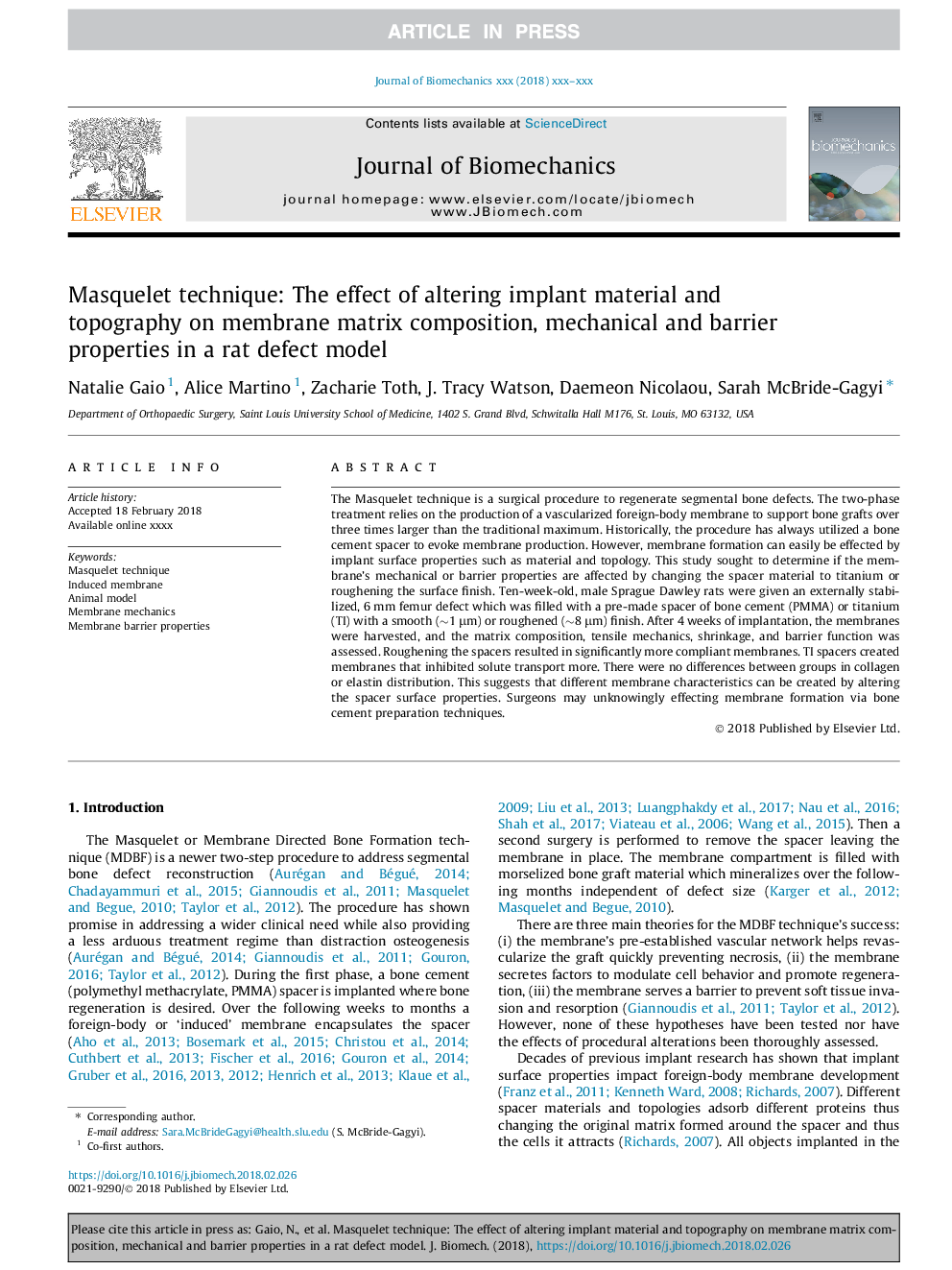| Article ID | Journal | Published Year | Pages | File Type |
|---|---|---|---|---|
| 7236271 | Journal of Biomechanics | 2018 | 10 Pages |
Abstract
The Masquelet technique is a surgical procedure to regenerate segmental bone defects. The two-phase treatment relies on the production of a vascularized foreign-body membrane to support bone grafts over three times larger than the traditional maximum. Historically, the procedure has always utilized a bone cement spacer to evoke membrane production. However, membrane formation can easily be effected by implant surface properties such as material and topology. This study sought to determine if the membrane's mechanical or barrier properties are affected by changing the spacer material to titanium or roughening the surface finish. Ten-week-old, male Sprague Dawley rats were given an externally stabilized, 6â¯mm femur defect which was filled with a pre-made spacer of bone cement (PMMA) or titanium (TI) with a smooth (â¼1â¯Î¼m) or roughened (â¼8â¯Î¼m) finish. After 4â¯weeks of implantation, the membranes were harvested, and the matrix composition, tensile mechanics, shrinkage, and barrier function was assessed. Roughening the spacers resulted in significantly more compliant membranes. TI spacers created membranes that inhibited solute transport more. There were no differences between groups in collagen or elastin distribution. This suggests that different membrane characteristics can be created by altering the spacer surface properties. Surgeons may unknowingly effecting membrane formation via bone cement preparation techniques.
Related Topics
Physical Sciences and Engineering
Engineering
Biomedical Engineering
Authors
Natalie Gaio, Alice Martino, Zacharie Toth, J. Tracy Watson, Daemeon Nicolaou, Sarah McBride-Gagyi,
